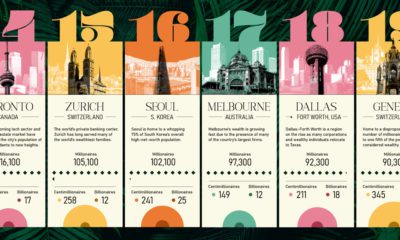Why the Cayman Islands Are Better For Business
Presented by Cayman Enterprise City On February 8, 1794, the people of the Cayman Islands rescued the crews of a group of ten merchant ships. The ships had struck a reef and run aground during rough seas. Legend has it that King George III of the United Kingdom rewarded the Caymanians with a promise never to introduce taxes as compensation for their generosity, as one of the ships carried a member of the King’s own family. Whether this legend is true or not, the Cayman Islands have a rich history of relying on indirect taxes, making it one of the best places to do business in the world.
5 Reasons It’s Worth Relocating a Company to the Caymans
- Life is Grand The Cayman Islands are an English-speaking Overseas British Territory with year-round warmth and state-of-the-art infrastructure and attractions. Grand Cayman, the largest of the three islands, has an area of about 200 km². Its most striking features include: the shallow, reef-protected lagoon called the North Sound, as well as the famous Seven Mile Beach along the west of the island.
GDP per capita: 14th in the world – The highest standard of living in the Caribbean. Ranked ‘The friendliest place on earth to live and work’ in a recent HSBC expat global survey. Ranked: “The Caribbean’s Best Beach” – Seven Mile Beach by Caribbean Travel & Life
- The Ideal Business Jurisdiction Located in the Eastern Standard Timezone and 3.5 hrs from Toronto and 3 hrs from New York City, Cayman is the ideal business jurisdiction. The island also has direct flights to London, the gateway to Europe. The Cayman Islands have the some of the highest anti-money laundering compliance requirements and offers a pro-business regulatory environment.
- Taxation The Caymans have a long history of having no direct taxes on residents and Cayman Island companies.
No corporate tax No capital gains tax No sales tax No income or payroll tax
This has partly allowed the Caymans to become the sixth largest global financial centre and the #1 home to hedge funds in the world. 4. A Gateway to World-Class Companies and Services The Cayman Islands is home to many global institutions including banking, accounting, and law firms. Companies in the Cayman:
40 of 50 of the world’s top banks have branches The Big 4 accounting institutions Global law offices such as Maples & Calder
It has a world-class infrastructure, excellent schools, colleges and medical facilities, plus every conceivable form of entertainment, sporting, dining and leisure facility. 5. Special Economic Zones The Cayman Islands have recently introduced “Special Economic Zones” that specifically cater to exempted companies, creating an alternative licensing regime, as well as a number of additional incentives for entities wishing to establish a physical presence in the Islands.
100% exempt from corporate, capital gains, sales, income tax and import duties 100% foreign ownership permitted Five year renewable work/residence visas granted within 5 days 3-4 week fast-track set-up of operations Intellectual Property owned offshore No government reporting requirements Strategic base with easy access to lucrative North and Latin American markets
One More Reason: Cayman Enterprise City Cayman Enterprise City (“CEC”) is an award-winning Special Economic Zone located in the tax-neutral Cayman Islands, created for knowledge-based industries and has developed into an innovative, entrepreneurial technology hub benefiting from a tax-exempt environment. CEC has stripped away the red-tape and financial constraints normally associated with setting up an offshore Cayman company with a physical presence. CEC enables international companies to easily and cost-effectively set up offices with staff on the ground and have a genuine offshore physical presence and generate active business income in the Cayman Islands.
on Even while political regimes across these countries have changed over time, they’ve largely followed a few different types of governance. Today, every country can ultimately be classified into just nine broad forms of government systems. This map by Truman Du uses information from Wikipedia to map the government systems that rule the world today.
Countries By Type of Government
It’s important to note that this map charts government systems according to each country’s legal framework. Many countries have constitutions stating their de jure or legally recognized system of government, but their de facto or realized form of governance may be quite different. Here is a list of the stated government system of UN member states and observers as of January 2023: Let’s take a closer look at some of these systems.
Monarchies
Brought back into the spotlight after the death of Queen Elizabeth II of England in September 2022, this form of government has a single ruler. They carry titles from king and queen to sultan or emperor, and their government systems can be further divided into three modern types: constitutional, semi-constitutional, and absolute. A constitutional monarchy sees the monarch act as head of state within the parameters of a constitution, giving them little to no real power. For example, King Charles III is the head of 15 Commonwealth nations including Canada and Australia. However, each has their own head of government. On the other hand, a semi-constitutional monarchy lets the monarch or ruling royal family retain substantial political powers, as is the case in Jordan and Morocco. However, their monarchs still rule the country according to a democratic constitution and in concert with other institutions. Finally, an absolute monarchy is most like the monarchies of old, where the ruler has full power over governance, with modern examples including Saudi Arabia and Vatican City.
Republics
Unlike monarchies, the people hold the power in a republic government system, directly electing representatives to form government. Again, there are multiple types of modern republic governments: presidential, semi-presidential, and parliamentary. The presidential republic could be considered a direct progression from monarchies. This system has a strong and independent chief executive with extensive powers when it comes to domestic affairs and foreign policy. An example of this is the United States, where the President is both the head of state and the head of government. In a semi-presidential republic, the president is the head of state and has some executive powers that are independent of the legislature. However, the prime minister (or chancellor or equivalent title) is the head of government, responsible to the legislature along with the cabinet. Russia is a classic example of this type of government. The last type of republic system is parliamentary. In this system, the president is a figurehead, while the head of government holds real power and is validated by and accountable to the parliament. This type of system can be seen in Germany, Italy, and India and is akin to constitutional monarchies. It’s also important to point out that some parliamentary republic systems operate slightly differently. For example in South Africa, the president is both the head of state and government, but is elected directly by the legislature. This leaves them (and their ministries) potentially subject to parliamentary confidence.
One-Party State
Many of the systems above involve multiple political parties vying to rule and govern their respective countries. In a one-party state, also called a single-party state or single-party system, only one political party has the right to form government. All other political parties are either outlawed or only allowed limited participation in elections. In this system, a country’s head of state and head of government can be executive or ceremonial but political power is constitutionally linked to a single political movement. China is the most well-known example of this government system, with the General Secretary of the Communist Party of China ruling as the de facto leader since 1989.
Provisional
The final form of government is a provisional government formed as an interim or transitional government. In this system, an emergency governmental body is created to manage political transitions after the collapse of a government, or when a new state is formed. Often these evolve into fully constitutionalized systems, but sometimes they hold power for longer than expected. Some examples of countries that are considered provisional include Libya, Burkina Faso, and Chad.














